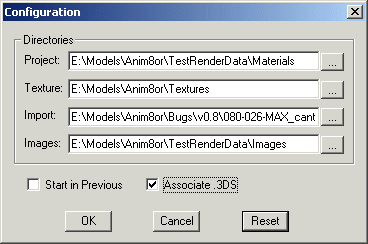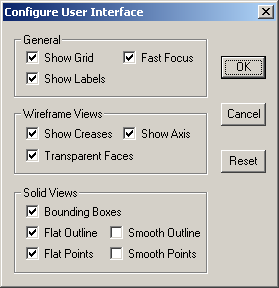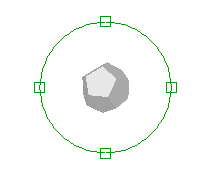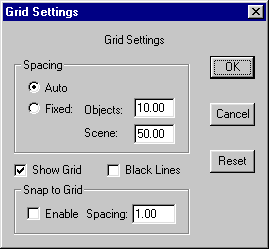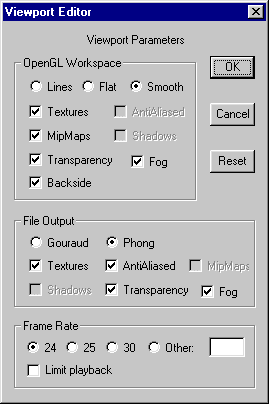Common Button Meanings
|
The topmost group can have up to 4
buttons in it. When you click on one it set the indicated mode, and
changes the lower part of the toolbar to show the functions that are
present in your new mode. The different modes are:
|

|
This button indicates that you are
in the most basic select-and-edit mode for the editor that you are currently
using. You will use it for most operations, such as selecting things
and common editing actions.
|

|
This button is used for changing your
view or views of your workspace. With it you can pan, zoom, tilt, and
scale each view independently.
|

|
In this mode you can move and rotate
the pivot for objects in your workspace. A pivot is the point and orientation
that are used when you scale and rotate each object.
|

|
You use this button to move into point
edit mode. It allows you to add, move, and modify individual points,
edges, and faces on editable mesh objects.
|
The next row of three small buttons  shows the three axis of the 3D world. They indicate which axes
are "unlocked', allowing you to move and rotate things in each direction.
You can individually select or deselect them, and thus restrict the movement
of objects that you are changing.
shows the three axis of the 3D world. They indicate which axes
are "unlocked', allowing you to move and rotate things in each direction.
You can individually select or deselect them, and thus restrict the movement
of objects that you are changing.
|
Below these buttons you will find
three more small buttons  that form a radio group. They show the current coordinate system
you are using. You can use world, object, or screen
coordinates when you manipulate things.
that form a radio group. They show the current coordinate system
you are using. You can use world, object, or screen
coordinates when you manipulate things.
You will find that there are several common toolbar buttons that
have the same or similar meanings in more than one editing mode. They
are described next.
|

|
You use the arrow button to select
individual components. When you click on an object using the left mouse
button, you select it and deselect any previously selected objects. When
you use the right mouse button, you leave any currently selected objects
selected, and select additional ones.
|

|
With this button you can click and
drag to show the corners of a selection rectangle. Any and all objects
that fall within that area are then selected. Again, the left mouse deselects
any previously selection items, while the right mouse does not.
|

|
This is the move function. You set
it when you want to move your objects around on the screen. When you
press the left mouse button within a view window you can drag anything
that is currently selected in the X and Y directions by moving the mouse
to the left and right, or up and down. The objects will move along with
your mouse. Similarly, the right mouse button will move them along the Z-axis,
which is usually into the screen.
|

|
This is the rotate button, used for
rotating things. When you click and drag the left mouse button, any
selected objects will rotate around the X and Y-axes along with your
mouse. You can use the right button to rotate them around the Z-axis.
|

|
This is the non-uniform scaling button.
With it you can scale most objects independently in the X any Y directions
using the left mouse button, and in the Z direction with the right mouse
button.
|

|
This button scales objects in all
dimensions simultaneously.
|
|
There is also a VCR style set of buttons
for controlling the playback of your animations. You use its buttons in
the same manner as those on a standard VCR or tape player.
|

|
